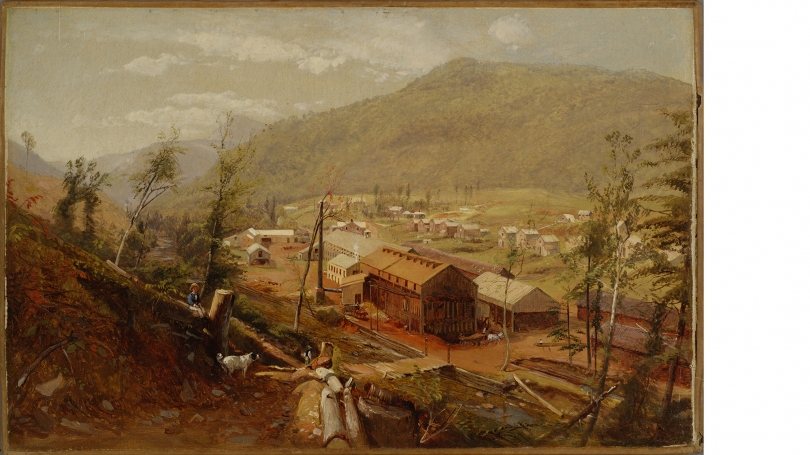Tannery in the Catskills is remarkable for its fusion of a romantic, mid-19th–century landscape aesthetic with a detailed depiction of industry—a subject usually antithetical to the pastoral ideal. The painting's mountainous terrain, atmospheric perspective, and elevated vantage point typify the idealized compositions that lured tourists to such picturesque destinations as the Catskills and the White Mountains. These regions, however, were also rich in the natural resources necessary to support tanneries, including abundant waterways and large stands of eastern hemlock, the bark of which contained the tannins essential to the tanning process. Despite the tremendous proliferation of tanneries throughout the Northeast in the early to mid-nineteenth century, artists typically omitted them from their favored vistas. This painting's primary focus, on the other hand, is the crisply rendered buildings that made up Snyder's tannery, which was built by Col. Henry David Hamilton Snyder in 1850 in Shandaken, New York, and at its peak employed over two hundred workers. The foreground of this painting, which was almost certainly commissioned by Snyder, is littered with abandoned, felled logs, stripped of their bark, suggesting the deforestation that typically resulted from tannery operations. Nonetheless, the artist's successful integration of the tannery buildings into the mountain setting suggests a harmonious balance between unspoiled nature and the technological progress that in the mid-19th century was also emerging as a source of national pride.
